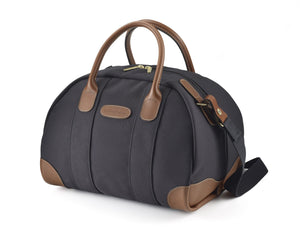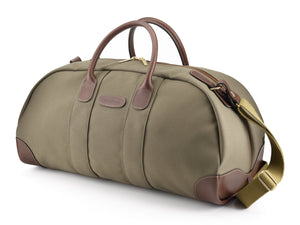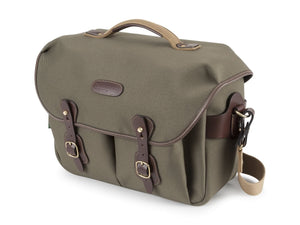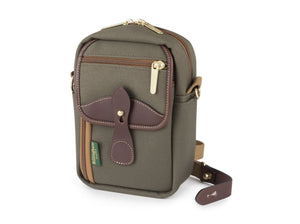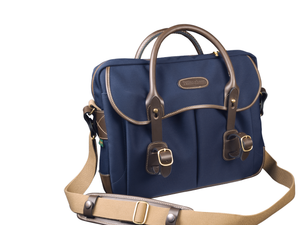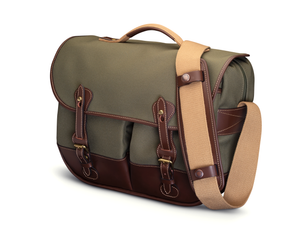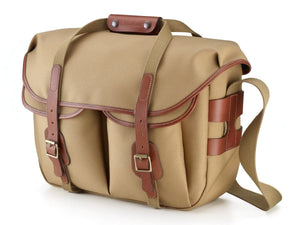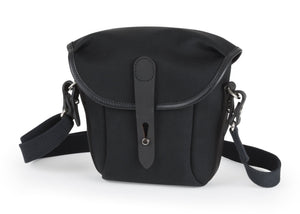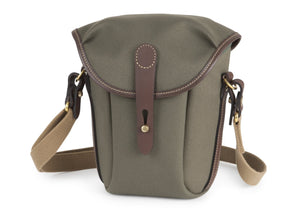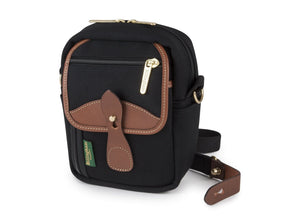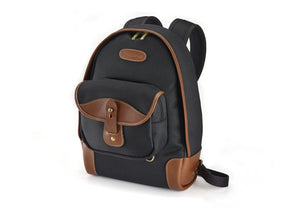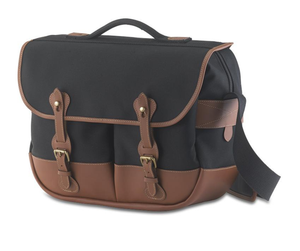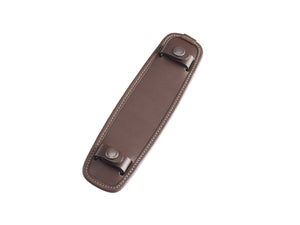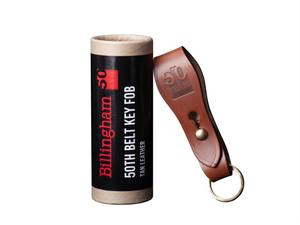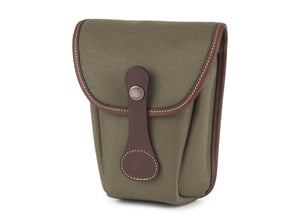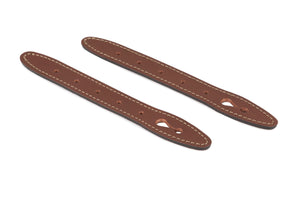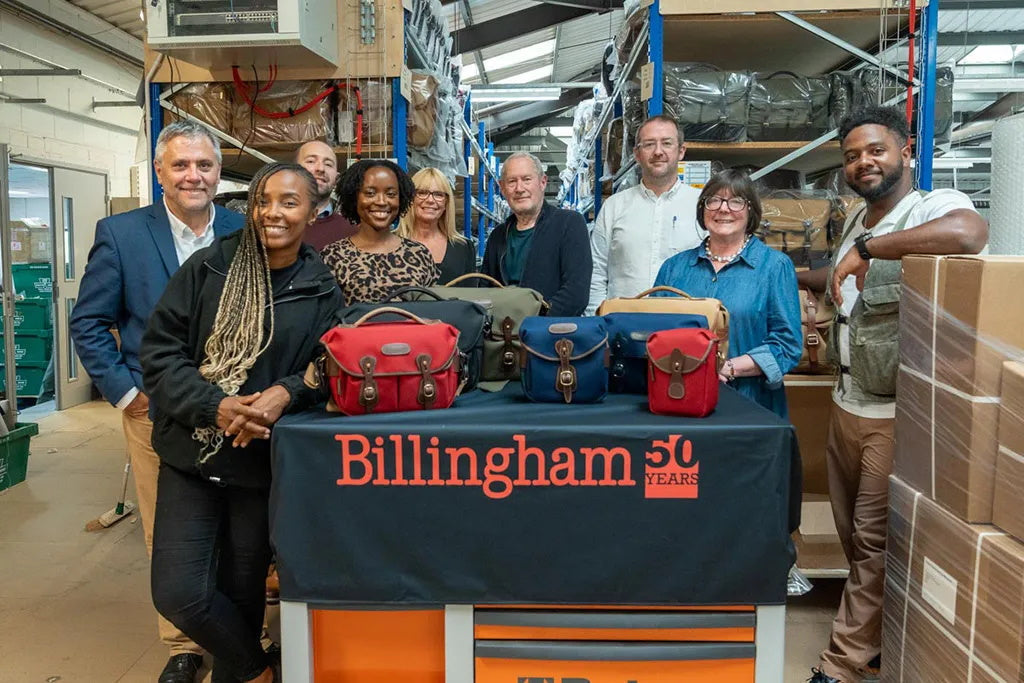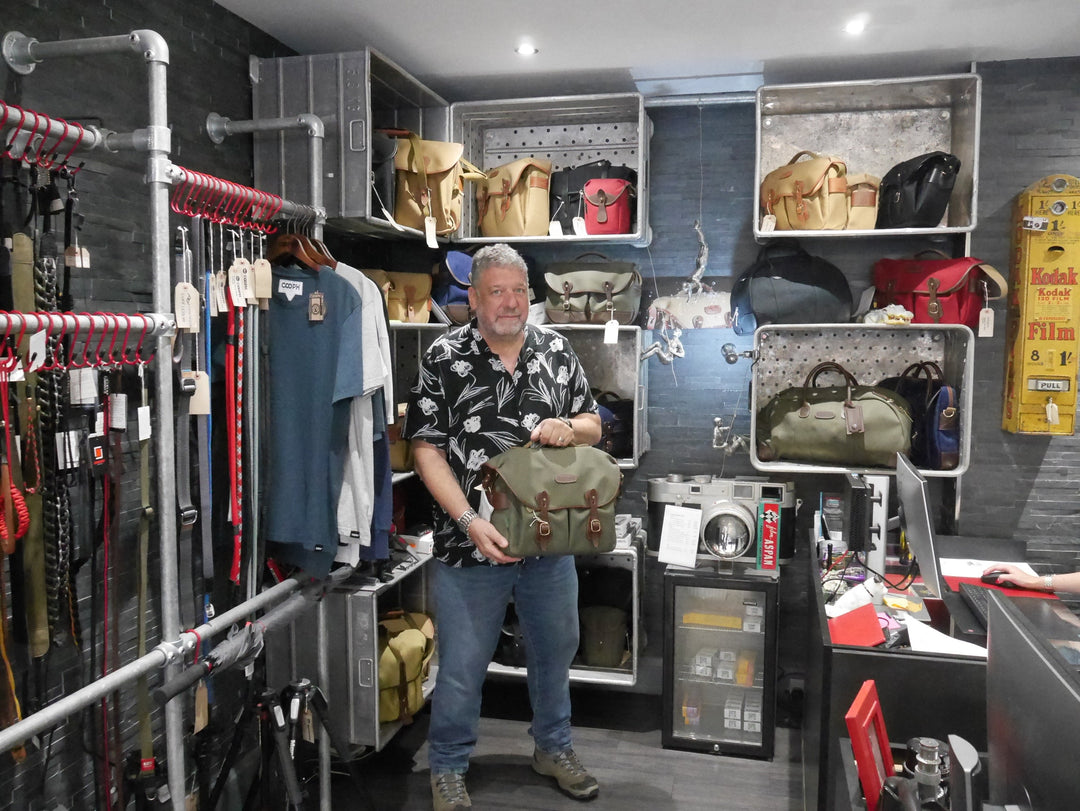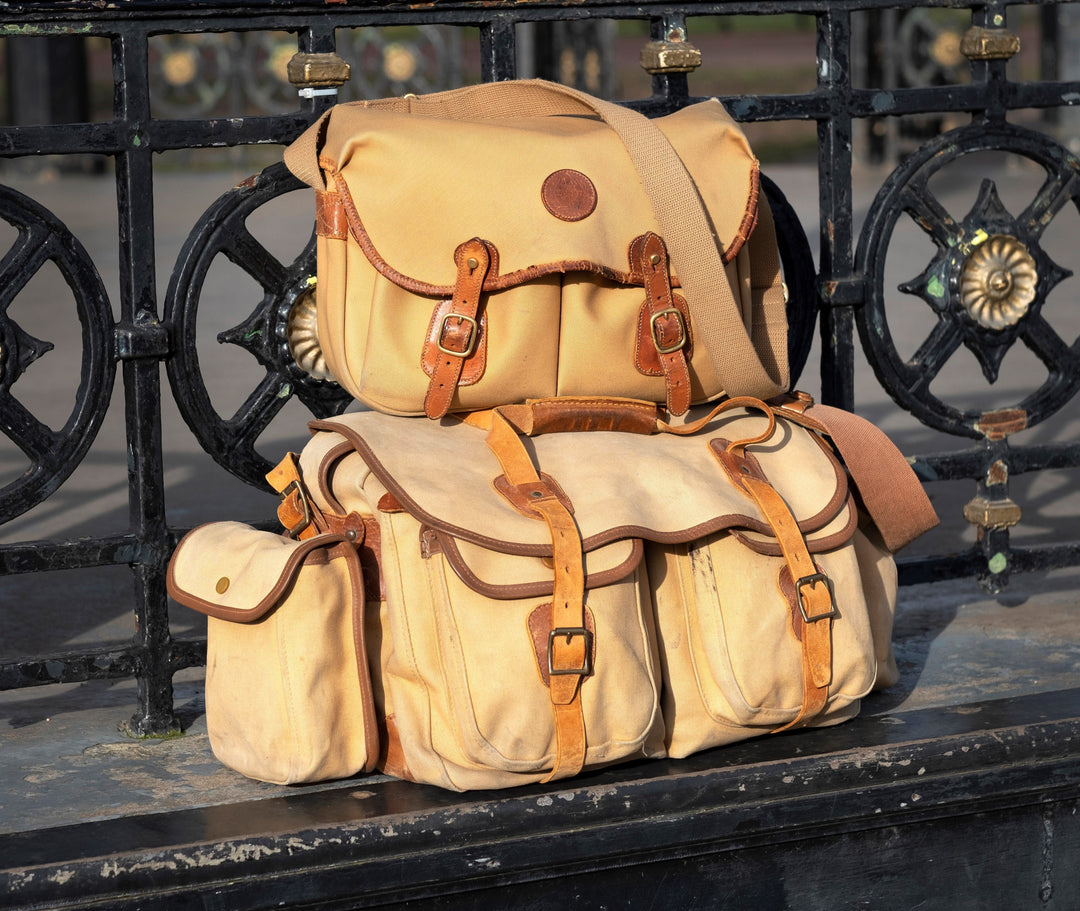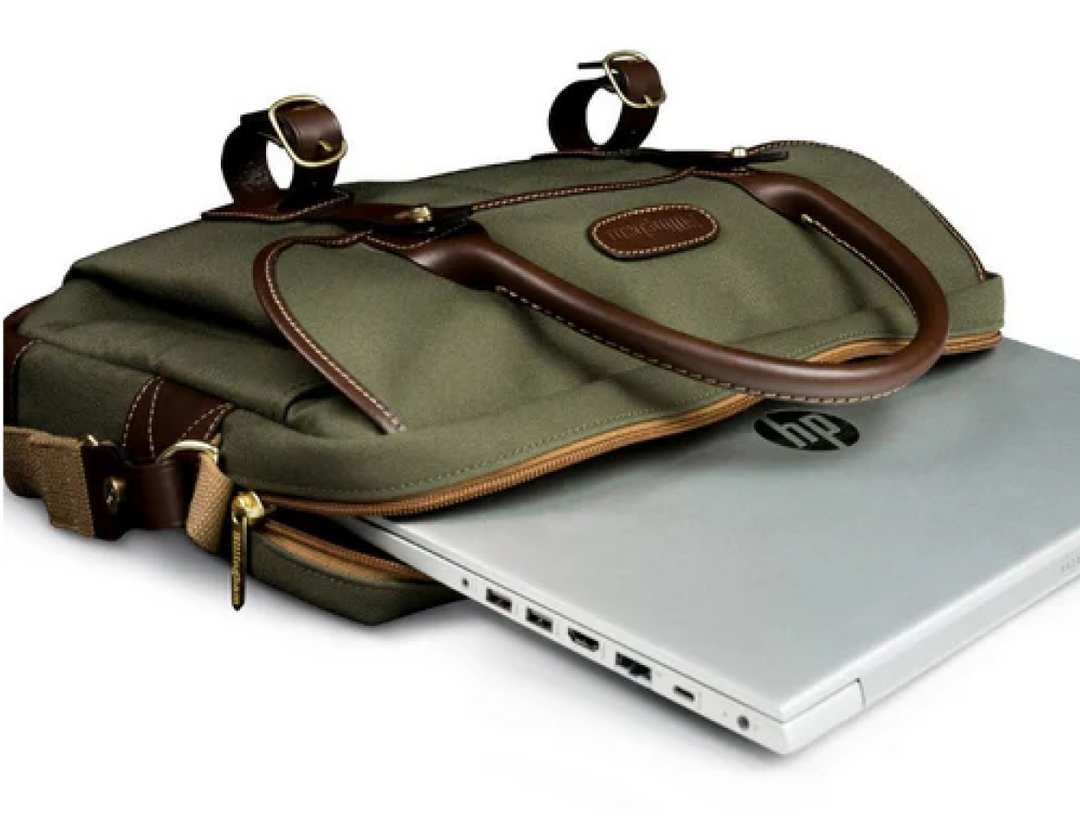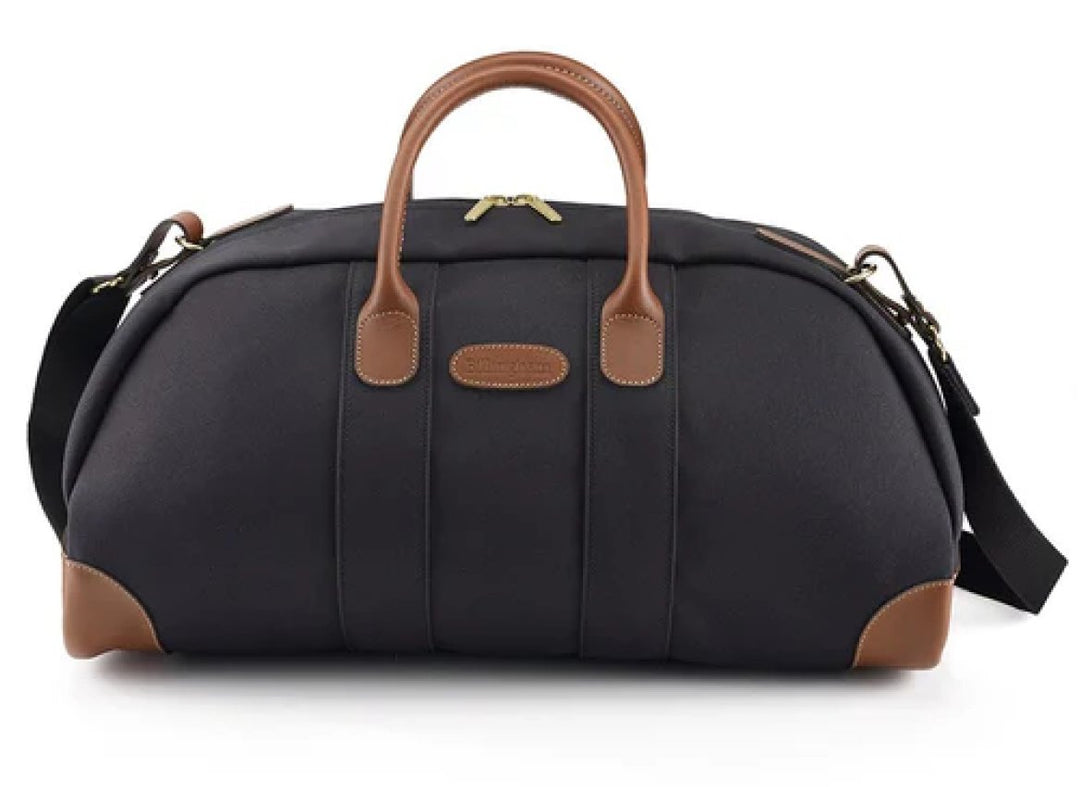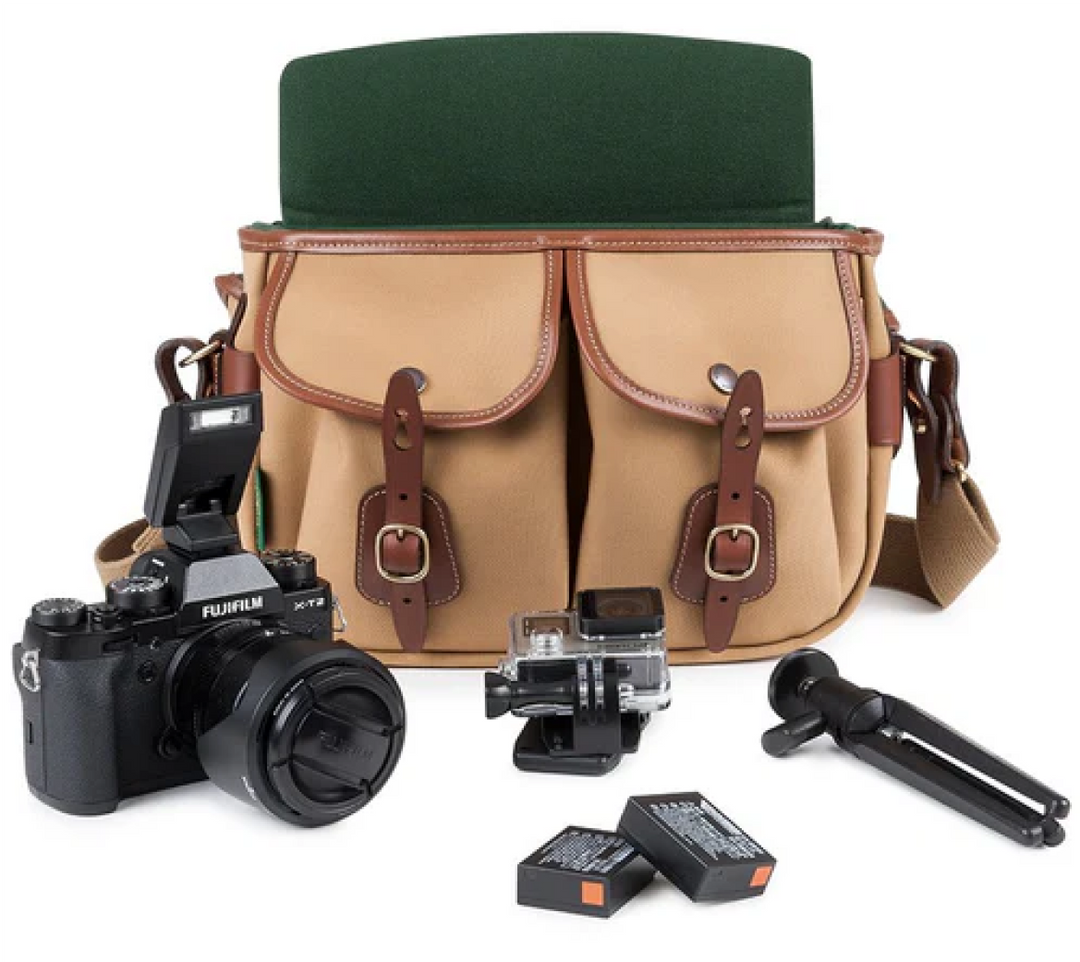Camera in hand: talking Tokyo Camera Style with John Sypal
John Sypal was born and raised in Nebraska, USA, but has been living in Japan since 2004. His fascination with Japan’s photography culture led him to create the hugely popular Instagram channel, @tokyocamerastyle. Described by John simply as ‘Cameras and Photography spotted in Tokyo, Japan’, the channel boasts a healthy 130,000 followers. A collection of these images was published by Thames & Hudson in 2015. In addition to #CameraStyle snaps, John has held over thirty solo shows of his own 35mm black and white photography and his photobook “Zuisha” was published by Zen Foto Gallery in 2017. As a Billingham owner and enthusiast, we couldn’t resist getting in touch to ask John a few questions about his work and lifestyle.
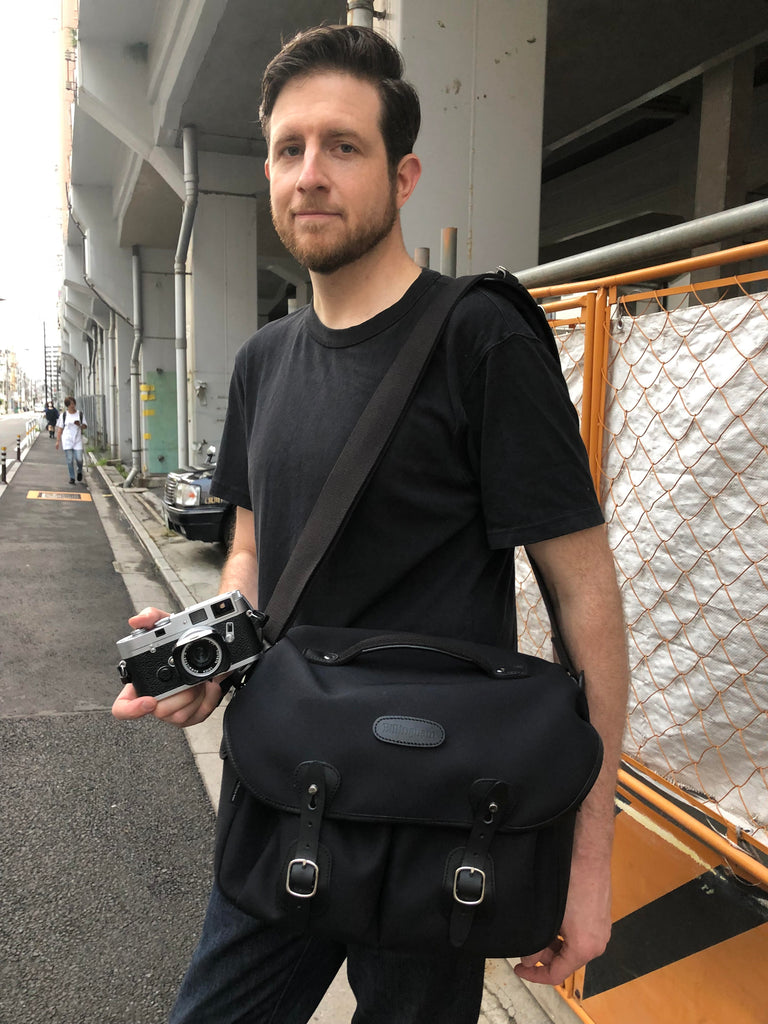
John Sypal with his Leica MP and Billingham Hadley One Camera Bag © John Sypal
Tell us a little bit about yourself – your background, lifestyle and career
I’ve been living in Japan for the past fifteen years. I have a job unrelated to photography that thankfully allows for some time to pursue my interests - the main one being photography. Incorporating a cycle of shooting and developing film, darkroom printing, and exhibiting my photographs is one of those things what, while not “my living”, adds to my experience of living. I’m a member of Totem Pole Photo Gallery ( http://tppg.jp/ ) in Tokyo. it’s a small artist-run space that 10 amateur photographers and I use to exhibit work and participate in the city’s vibrant photography community.
Who or what inspired you to become a photographer?
I was an art major in university. Photography was one of the required basics and I kept putting it off until the end. I had taken a semester of photo in high school but the medium didn’t completely “click” until meeting Dave Read, my professor at the university in the fall of 2000. His intro to photo course was fantastic - hours of slideshow lectures and plenty of darkroom time. Our textbook was Stephen Shore’s legendary primer, “The Nature of Photographs”.
View this post on Instagram
One of John Sypal's photos from his TokyoCameraStyle Instagram feed © John Sypal
What was the inspiration behind Tokyo Camera Style? When did you start the channel and why?
In 2008, I was invited by a group of photographers to participate in this week-long exhibition that was spread in and around a historical street in the city. Most people who go to photo shows have a camera of their own around their neck - after two days I thought it might be fun to document the gear I was seeing. At that time you couldn’t look at a photo website or camera forum without someone declaring that film photography was obsolete and dead as a doornail. “Well, I’ll show you…” , I thought. I had recently heard of this new blogging site called “Tumblr” and set up an account. The title came naturally - it had to accurately describe the content. Tokyo Camera Style happened to be the first of something new. There have always been gear websites but there weren’t any sites then that celebrated the personal connections people had with their gear. Since I started TCS there have been a few spin-off accounts that are fun and a few imitators. Photographing a camera has gone from something you’d catch heat for in a forum to what seems to be 85% of what Instagram recommends me! I think there’s a growing appreciation for “real” things, be they well-made objects or experiences. While TCS started out about cameras I’ve lately been including more information about exhibitions and events in Tokyo, too. Many people will double-tap a picture of a Hasselblad but the posts that share events and photography - shows, books, etc - seem to enjoy a deeper appreciation by readers.
What has been your most popular Instagram post?
It was actually a post of my Leica M6 with a stack of 5x7 prints I had done in a recent darkroom session. It’s funny. People respond more to the possibilities suggested by a camera and prints than they do to just another picture of an expensive or rare camera. I kinda think it’s like pictures of cars. If you see a picture of a guy sitting in his Ferrari, well, that’s that guy’s car. But if you see a picture of a Ferrari by itself, suddenly it’s like, hey - that could be MY car. (I’d rather have a Land Cruiser). Maybe people were attracted to the potential which the stack of prints in the picture represented. Same for pictures of unopened boxes of film - suggestions of potential, or a dream, which people apply to stuff they see on Instagram. That said, I don’t have any strategy or anything when it comes to posts, and have never done it for the Likes. My only goal is to share the stuff I find interesting- and Tokyo’s photo scene is incredibly interesting to me.
View this post on Instagram
John Sypal's most liked post on Instagram - with his Leica M6 and 5x7 prints. © John Sypal
You recently published your second book, Zuisha. Who or what is Zuisha? Can you give us some more details about the book and how it came about?
Rather than a person, the title is a made-up word based off of the literary term “zui-hitsu”, an informal essay genre in Japan that’s sort of a train of thought kind of thing. The kanji mean “follow (the) brush”- Zuisha, despite being a made up word by a foreigner is recognised easily as “following the lens” by Japanese readers. It fits how I shoot - snapping as a reaction to, or participation with, something. I don’t wake up with a particular image in mind that I want to take. I enjoy an approach where you keep your eyes and mind open and see what happens.
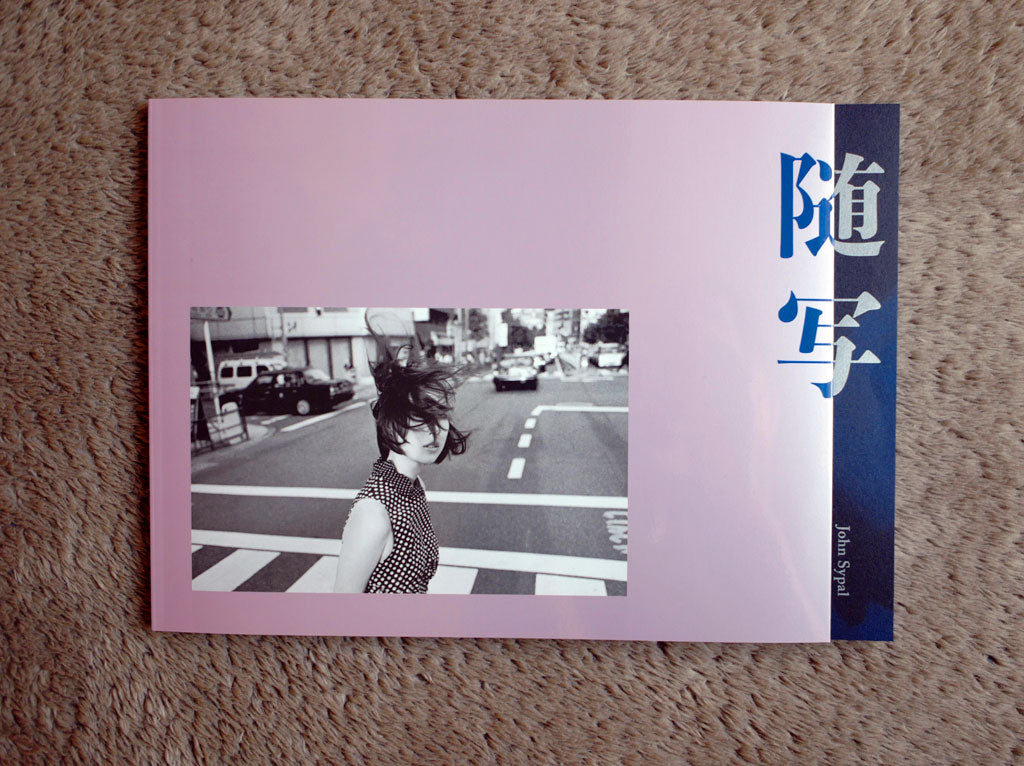
'Zuisha' book by © John Sypal
Where can our readers buy your books?
Zuisha is available here on shashasha.co - that site is a wonderful resource with which to build a photobook library and to discover published photographers one might not have heard of yet. The Tokyo Camera Style book, published by Thames & Hudson in 2015, is still readily available on Amazon.
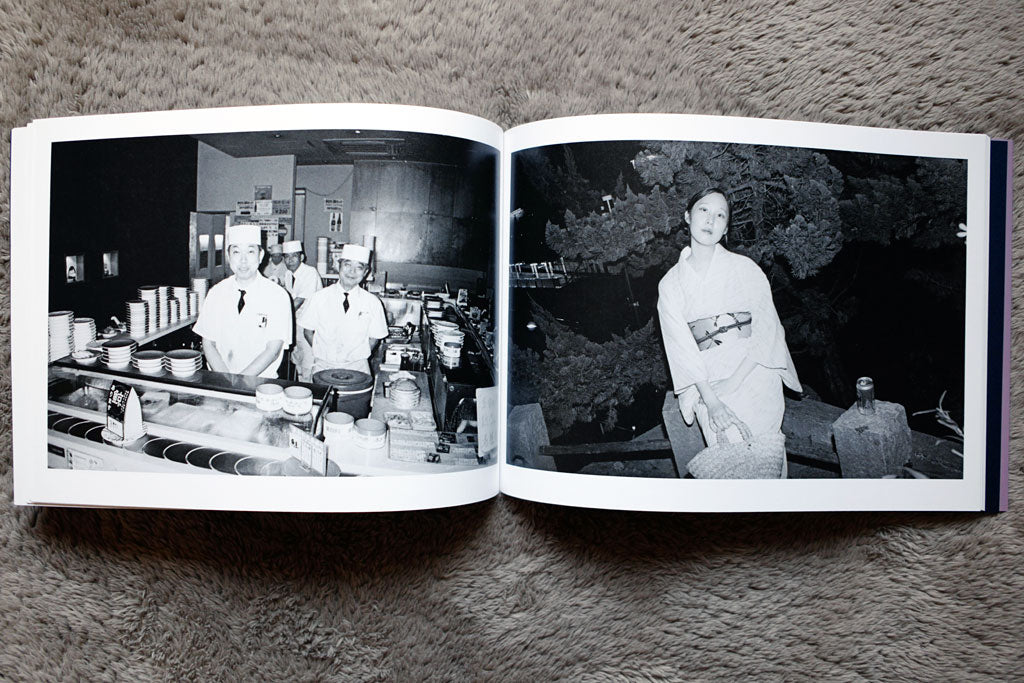
Excerpt from 'Zuisha' © John Sypal
We read your comment that ‘the relationship one has with their camera affects their approach to making a picture’. Can you explain more about this?
Certainly. I guess I’ll go back to a car analogy. A car gets you from point A to point B, and we’d all agree that that’s most of what the average person wants in one. But maybe for some, driving isn’t simply about transportation… it’s about the feel of the vehicle, the appreciation of it on often inexplicable personal terms. If you use a particular camera enough, you get to a point where it’s part of you. There’s little friction in use and any quirks about it that may bother others are just “character”. The same goes for anything we use - be it bicycles or watches or camera bags. Investing time into a tool creates a connection to it. This isn’t about consumerism or anything like that. It’s a recognition that if the tools we use mean something to us, chances are they will help us make something with meaning.
When you are out on the streets shooting, what do you look for?
I look for life, people doing things… things other than head-down staring at a screen, when possible. That’s getting harder to do! Interaction is interesting in pictures, both between subjects with each other but also between the subject any myself when possible. I’ve had too few unpleasant encounters to mention… most people in Tokyo seem to not notice or mind cameras on the streets.
View this post on Instagram
A Billingham Hadley Large in Imperial Blue Canvas and Tan Leather carried by John's friend Makoto Suzuki.
You must capture a large number of images every week. How do you decide which photos to feature on your Instagram channel?
I tend to share most every camera that I snap. I’ll take a few shots of each camera and choose from those. After nearly 6,000 posts on my tumblr and another 4,000+ on Instagram. I don’t cross-post, everything is “original” (I use a Ricoh GRD for the tumblr shots and my iPhone for IG) - well, I’ve gotten pretty good at finding what’s a good angle for certain pieces of gear. There are a lot of film cameras that I see but miss, for one reason or another. If someone I see with one seems in a hurry or too far away that’s how it goes. There’s more interesting gear out there being used than any one guy like me could ever catch.
Did you study photography or have formal training, or was it something that developed over time?
I had two or three semesters in college under some great teachers. They inspired a life with photography. I haven’t let up on the workflow methods I was taught, nor the ways they taught how to “see” photography. I strongly believe that continuation is key - it is its own inspiration. Constantly producing work and learning from it has been what keeps me going. The more you do, the more you learn. Along the way I’ve found some wonderful mentors and the photographic community in Tokyo itself is something that is encouraging to participate in.
John's Tokyo Camera Style feed isn't only cameras. Here is his cat Margot playing some Super Famicom. © John Sypal
What equipment do you use for your own photography?
My own work is mostly done with a Leica M6 or Leica MP and a 35mm Summicron lens. In 2019, I held a show of my medium format photographs. For those, I use a Pentax 6x7 or a Fujifilm GF670. I also usually keep a small 35mm compact camera loaded with colour film in my bag, too.
Most photographers have a personal favourite photograph. What would you consider to be the best picture you’ve ever taken and why?
This picture isn’t exactly all-time favourite, but it’s a good example of why I keep a camera out and around my neck when out and about. One afternoon in the summer I was in the first car of a train headed back to Tokyo from Chiba. It suddenly lurched to a stop. In a spot on this was a long stretch of track in residential Eastern Tokyo with no stations nearby. I looked out the window to see what was going on and saw this young girl looking back up at me. She had climbed over the fence to explore or play - thankfully she wasn’t on the tracks - but she got an earful from the driver, that’s for sure. I had my camera around my neck and figured, well, why not - and snapped a few frames. The entire incident was brief, just a few seconds but the shot is interesting. In the upper left-hand corner you can see the girl’s friend just clearing the fence to come join her. Even though the picture is visually interesting I obviously don’t think kids ought to be playing on train tracks.

View from the Tokyo to Chiba train © John Sypal
What’s in your kitbag currently?
This question was recently asked of me by Nippon Camera magazine. I loaded up my bag and took it to a studio for the magazine feature. They’ve kindly allowed me to share the pages here.
Normally I don’t pack this much in, but for this feature I’ve had my Leica MP with a 35mm Summicron Asph. lens, a 50mm f2.8 Elmar-M, some Ilford HP-5 in 35mm and 120, a Fujifilm GF670 medium format rangefinder, a small Panasonic flash, a Ricoh GRDIII that I use for the TCS Tumblr, and a Polaroid 690 (and some snaps from it). I also carry some non-camera gear inside - including a box of recent 5x7 darkroom, a book (I’ve long since finished) of Japanese literature, a large sketchbook (that admittedly, I don’t carry around with me every day) and my daily planner (which I do). There’s also a bottle of the cold green tea I like - I do keep one of those in either the front pocket, or on a hot day, inside the bag. I know you don’t market Billingham bags for their insulation properties but they can keep a drink cool for a while!
A more standard daily setup would be a Leica M and a lens with a few rolls of HP-5, the GRDIII, my planner, and the inevitable bottle of cold green tea.
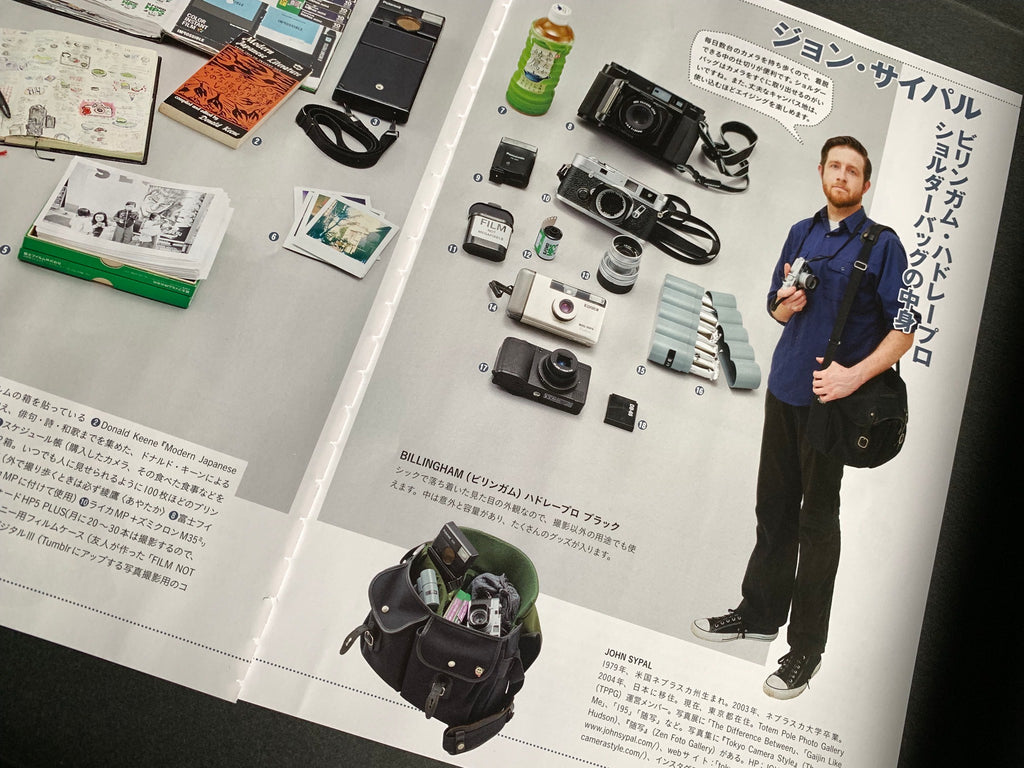
John Sypal with his Billingham Hadley Large in Nippon Camera Magazine. Courtesy of Nippon Camera Magazine.
You have owned a couple of Billingham Hadley Large bags for some time, and have recently started using the Hadley One. What are your thoughts on these bags? How do you find them useful?
In early 2012, a friend of mine stopped by the gallery with a Billingham over his shoulder. As I admired how clean it looked he told me he had been using it for fifteen years. I was stunned. I had been wearing through to stitches a particular canvas camera bag every two or three years since university and decided at that movement I’d check out the Billingham section at Yodobashi Camera. The Hadley Pro looked great but the size of the Hadley Large fit my needs - that’s what I went home with. The customisable padded insert let me set it up exactly as I like - and what’s more I can easily fit photobooks and photo paper boxes between the insert and inner wall. This is useful because I like to have my hands free when walking to and from places in the city. It’s no fun to have something photographable happen in front of you when your hands are full. The Hadley One is just slightly smaller than the Large but my setup works the same. I wear my bag on my left side, and looking down I keep my (paper) planner in the front left pocket with film and a Ricoh GRD in the right. I normally have my camera around my neck but when it’s in the bag it goes in the padded main pocket. On either side of that I keep my wallet, phone, and usually that bottle of tea from a vending machine.
The Hadley One is definitely going with me on my next flight - the inclusion of that strap that can slide over a suitcase handle is a useful feature. Plus the One has that handle on top that the Large lacks. That’s a nice touch.
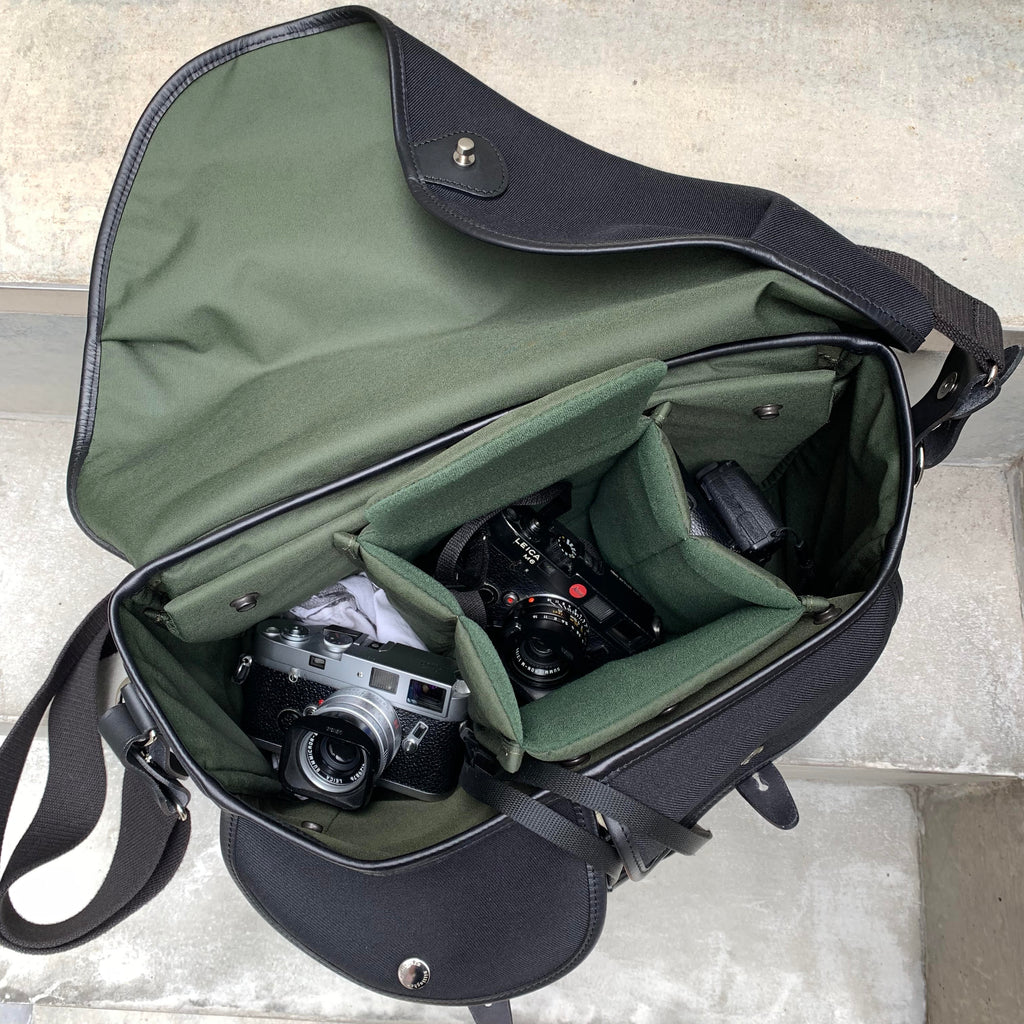
John Sypal's Billingham Hadley One Camera Bag with Leica MP, Leica M6 and Ricoh GRD © John Sypal
Which is your favourite Billingham product and why?
I’ve used the Hadley Large for a long time and there’s a lot I love about it. It can hold more than anyone would think and the internal padded divider insert keeps the bag firm. This keeps it looking nice, but also offers a lot of protection for gear. Unlike an unpadded canvas bag, I don’t have to worry about bumps or setting it down too hard or anything like that. Plus it goes with anything. I’m by no means a fashionable guy but Billingham bags go as well with jeans and a t-shirt as they do a full suit. The design is classic - the bags never yell “Camera inside!” and they’re very well made. I see quite a few out on the streets of Tokyo - and a LOT at Leica gallery opening parties in Ginza.
What’s your favourite / most cherished piece of equipment? Tell us more.
I’d have to say it’s my Leica MP. I bought it used at a shop in Tokyo in 2006 and it’s been a near constant companion since that day. I’ve put a few thousand rolls of film through it - this camera is on its third shutter and second chassis / rangefinder assembly (tip: don’t drop your camera!). The chrome is worn thin around some edges and completely away where my finger rests when shooting. I’ve said this before but the thing about the “unobtrusiveness” with a Leica M is to me less about the subject’s reaction and more about my experience with it. When you use the same camera every day for years it really does become a part of you. It’s hard to explain but sometimes you’ve already taken the picture before you realise your camera is at your eye. Same for camera bags, of course! I have my Billinghams set up in the same way. I don’t have to look down into it - I can reach in and pull out whatever it is I need by feel, instantly.
If you could take one piece of equipment with you to an important event or trip, what would it be?
Again, it would be my Leica MP! Sure, the camera is just a tool but humans tend to build bonds with their tools or machines or whatever. Having used this camera so much through so many years means it’d be my first choice for whatever would come next.
View this post on Instagram
John's Leica MP in Shinjuku, Tokyo © John Sypal
What exciting developments do you expect to see in the world of photography in the future?
That’s a good question. A lot of things are changing but seeing a younger generation find interest in film photography is good to see. I hope that this is followed by a greater interest in traditional darkroom work, too. Obviously, there is a place and need for the internet in our lives but there’s still something fascinating and fulfilling about the tangible aspects of photography- certainly the gear and bags and what-not - but the satisfaction of holding a new set of prints is something that I just can’t ever get tired of. They take effort but that’s part of the reward.
What advice would you give to young people thinking about a career in photography today?
Since I’m not full-time professional I can’t really speak about an actual career - but any “success” that I’ve found has been from finding something personally interesting and then continually doing it. I didn’t start out Tokyo Camera Style with a book or anything in mind. It just so happened that other people enjoyed what I was doing, and it grew from there. I have a feeling that a lot of younger people ache for near instant success or viral-ness or whatever. There’s so much photography and imagery out there - all technically excellent now, too - that it seems doubtful that we’ll see more sudden breakaway young photo-superstars. What matters is doing the work. I mean, if you keep at something long enough, someone has got to notice.
What is the project or piece of work you’re proudest of?
In terms of creating something that people are entertained or maybe inspired by, certainly Tokyo Camera Style is something that I’m glad I’ve done and continue to do. As for personal fulfilment, setting the Zuisha book aside, it’s probably just a constant, continual output of pictures and enjoying life with a camera- from clicking the shutter to taking the darkroom prints out of the wash to dry.

Excerpt from 'Zuisha' © John Sypal
Do you have any other social media channels? Please list them so our readers can follow you.
Tokyo Camera Style is a tumblr and an Instagram account. In terms of photographs with cameras and not OF cameras, I do have a portfolio site that has more samples of my work here: johnsypal.com
Where can people come and see your work / meet you? Do you have any forthcoming exhibitions, talks or appearances?
I hold a few exhibitions at Totem Pole Photo Gallery (http://tppg.jp/) in Shinjuku, Tokyo each year. I’m having a show of 35mm colour work from September 24 – October 6th, 2019. Totem Pole is a good spot for photographers and photography fans to visit when in the city - there’s always something up and shows change weekly or bi-weekly. Chances are other photographers will be there, so it’s a good spot to get to chat in person with other people with similar interests.
View this post on Instagram
One of John's exhibitions at Totem Pole Photo Gallery (http://tppg.jp/) in Shinjuku
What do you get up to when you’re not out taking photographs? What’s your biggest passion outside these areas?
Come to think of it, outside of my day job, everything else pretty much revolves around photography. The photo scene here is like I said, quite lively and more often than not you have to decide which opening or gallery talk to attend on any given Friday night rather than see if anything’s happening. I am focusing this year on reading more Japanese literature and that’s been a good way to further understanding about the culture. Food’s good in Tokyo too, that’s another way to do so!
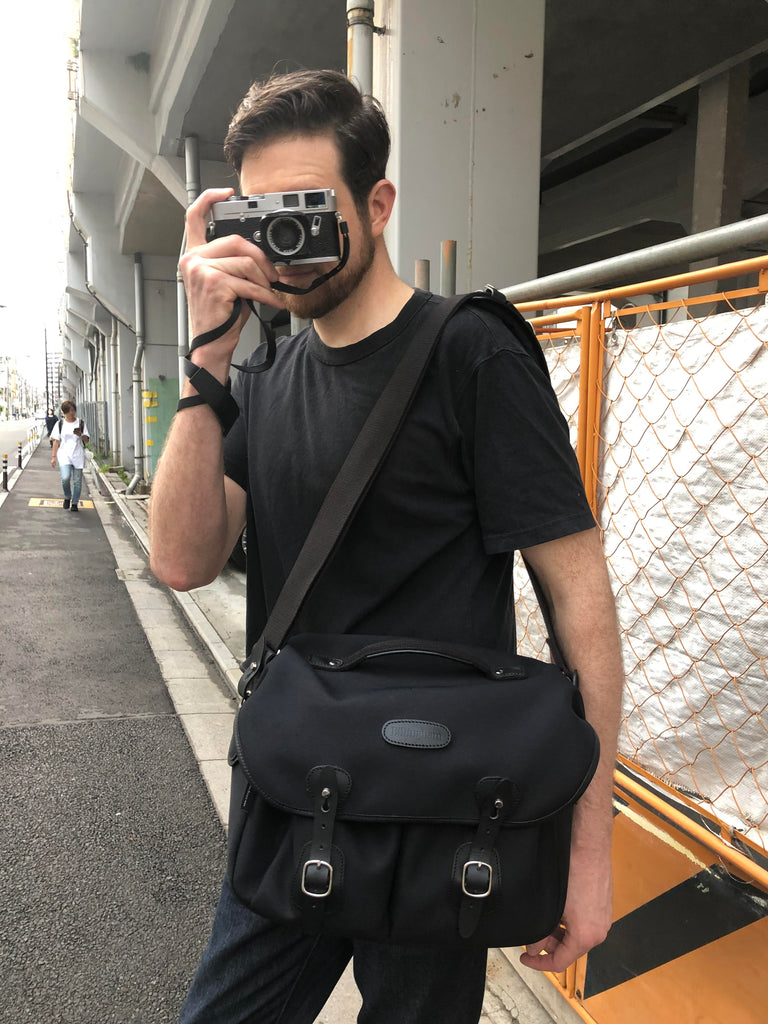
John Sypal with his Leica MP and Billingham Hadley One Camera Bag © John Sypal
John Sypal can be found at:
Website: http://www.johnsypal.com/
Instagram: https://www.instagram.com/tokyocamerastyle/
Tumblr: https://tokyocamerastyle.com
Totem Pole Photo Gallery: http://tppg.jp/
Zuisha Book: https://www.shashasha.co/en/book/zuisha-1
Tokyo Camera Style Book: https://www.amazon.co.uk/Tokyo-Camera-Style-John-Sypal/dp/0500291675/
The bags featured in this article:
|
|
|









